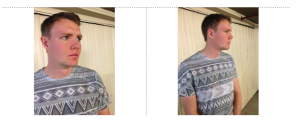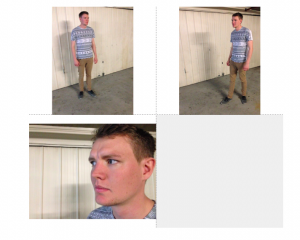‘Carpark Scene New’
I started the new carpark scene with the close up of the actor’s shoes, just like what I had done in my previous shoots. I tried to use the objects within the carpark to help with the framing and work with them instead of against them. The actor’s feet walk backwards and forwards and then walk towards the cement pillar. This is when the shot cuts into the next one. The camera is still tilted down towards the ground/shoes and then slowly tilts up to reveal the body and face of the actor. This is showing his body movements and facial expressions as he looks around the carpark, suggesting to the audience that he is looking out for something. Character 2 then says their line while character 1 is still looking around from behind the pillar. He continues to stay behind this pillar until the final shot. It suggests that it is protecting him from the thing they are hiding from. This cuts to a front view of character 1 while he replies. The camera cuts back to a MLS of the actor, showing the audience a little bit more about his surroundings. As the actor delivers his final line he starts walking away from the camera, suggesting to the audience that he is going to look for something/someone. The final shot is of the feet again, however this time they are coming from over the camera and walking up the ramp of the carpark. The camera tilts up, following the actor as he walks out of the shot/scene.


